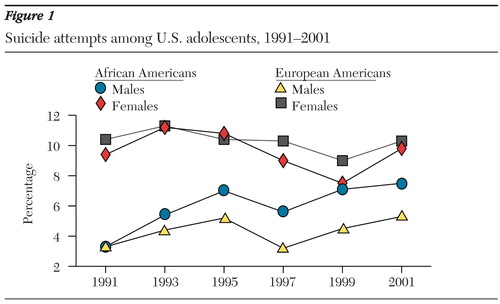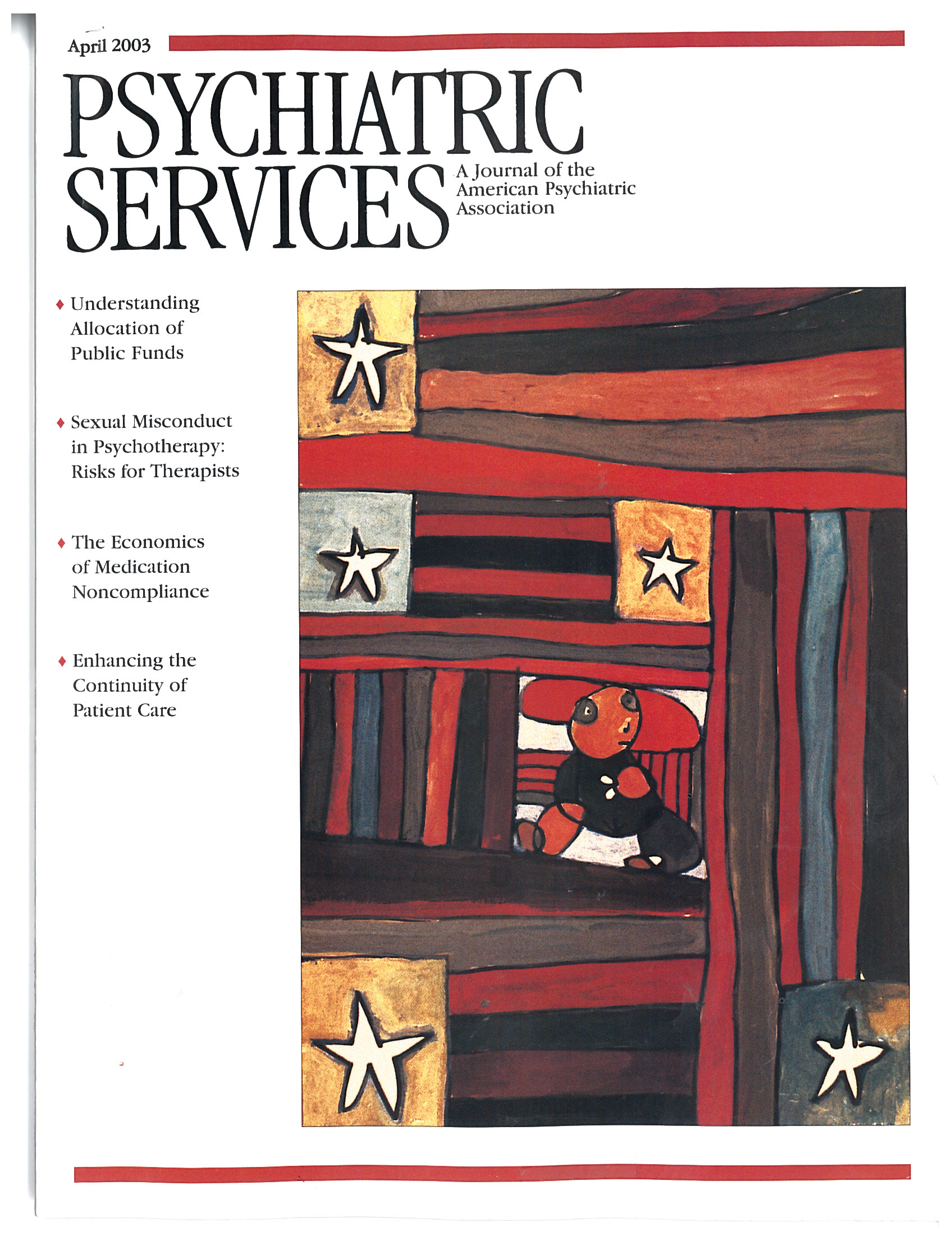Datapoints: Trends by Race and Gender in Suicide Attempts Among U.S. Adolescents, 1991-2001
A previous suicide attempt is the most significant determinant of whether an adolescent will complete suicide. Although suicide remains the third leading cause of death among U.S. adolescents, rates of suicide completion in this group have fallen steadily since 1993. No recent research has examined whether a corresponding decrease in adolescent suicidal behavior has occurred. Moreover, little work has focused on trends in suicide attempts in race and gender groups, especially among African-American males, a group known to be more exposed to life circumstances that place them at high risk of self-destructive behavior.
We compared data on suicidal behavior among African-American and European-American male and female adolescents from the 1991-2001 Youth Risk Behavior Survey (YRBS), a nationally representative school-based survey of students in grades 9 through 12, sponsored by the Centers for Disease Control and Prevention (1).
Even though suicide completions have decreased among all U.S. adolescents during the past decade (2), according to our analysis, the overall trend in suicide attempts rose from 7.3 percent in 1991 to 8.8 percent in 2001. However, as shown in Figure 1, the rate of attempted suicide among African-American male adolescents has risen markedly, from 3.3 percent in 1991 to 7.5 percent in 2001 (odds ratio [OR]=1.13; t=2.09, df=229, p= .038 for the yearly trend). In contrast, no significant change occurred in suicide attempts among African-American females, which increased slightly from 9.4 percent in 1991 to 9.8 percent in 2001. Among European-American adolescents, the rates did not change significantly: for males the rates increased over the ten-year period, from 3.3 percent to 5.3 percent; among females they decreased from 10.4 percent to 10.3 percent.
These descriptive epidemiological data illustrate the need for further empirical study and monitoring. Research is needed to determine whether the increase in suicidal behavior among African-American male youths is attributable to changes in their attitude toward suicidal behavior or willingness to report it, or to increased social isolation and prevalence of mental disorder. Future research should examine the relationship between suicide attempts and suicide completion among African-American males and should identify situational or contextual triggers and mental health risk factors that may be unique to this group (3). The findings can further efforts to develop prevention policies and interventions for this high-risk group.
Acknowledgment
This research was supported in part by grant K01-MH65499-01 from the National Institute of Mental Health.
Dr. Joe and Dr. Marcus are research assistant professors in the School of Social Work at the University of Pennsylvania, 3701 Locust Walk, Philadelphia, Pennsylvania 19104 (e-mail, [email protected]). Harold A. Pincus, M.D., and Terri L. Tanielian, M.A., are editors of this column.

Figure 1. Suicide attempts among U.S. adolescents, 1991—2001
1. 1.Centers for Disease Control and Prevention: CDC Surveillance Summaries: Youth Risk Behavior Surveillance, 1991-2001. Available at www.cdc.gov/nccdphp/dash/yrbs/index.htmGoogle Scholar
2. 2.Goldsmith SK, Pellmar TC, Kleinman AM, et al (eds): Reducing Suicide: A National Imperative. Washington, DC, Institute of Medicine, National Academies Press, 2002Google Scholar
3. 3.Joe S, Kaplan MS: Firearm-related suicide among young African-American males. Psychiatric Services 53:332-334, 2002Link, Google Scholar



